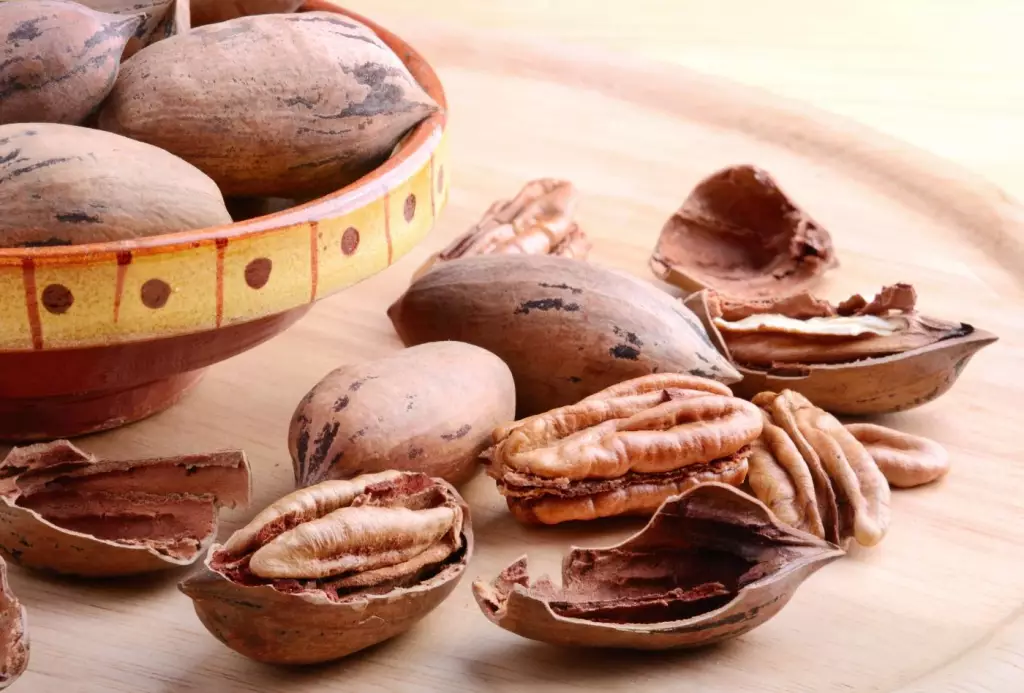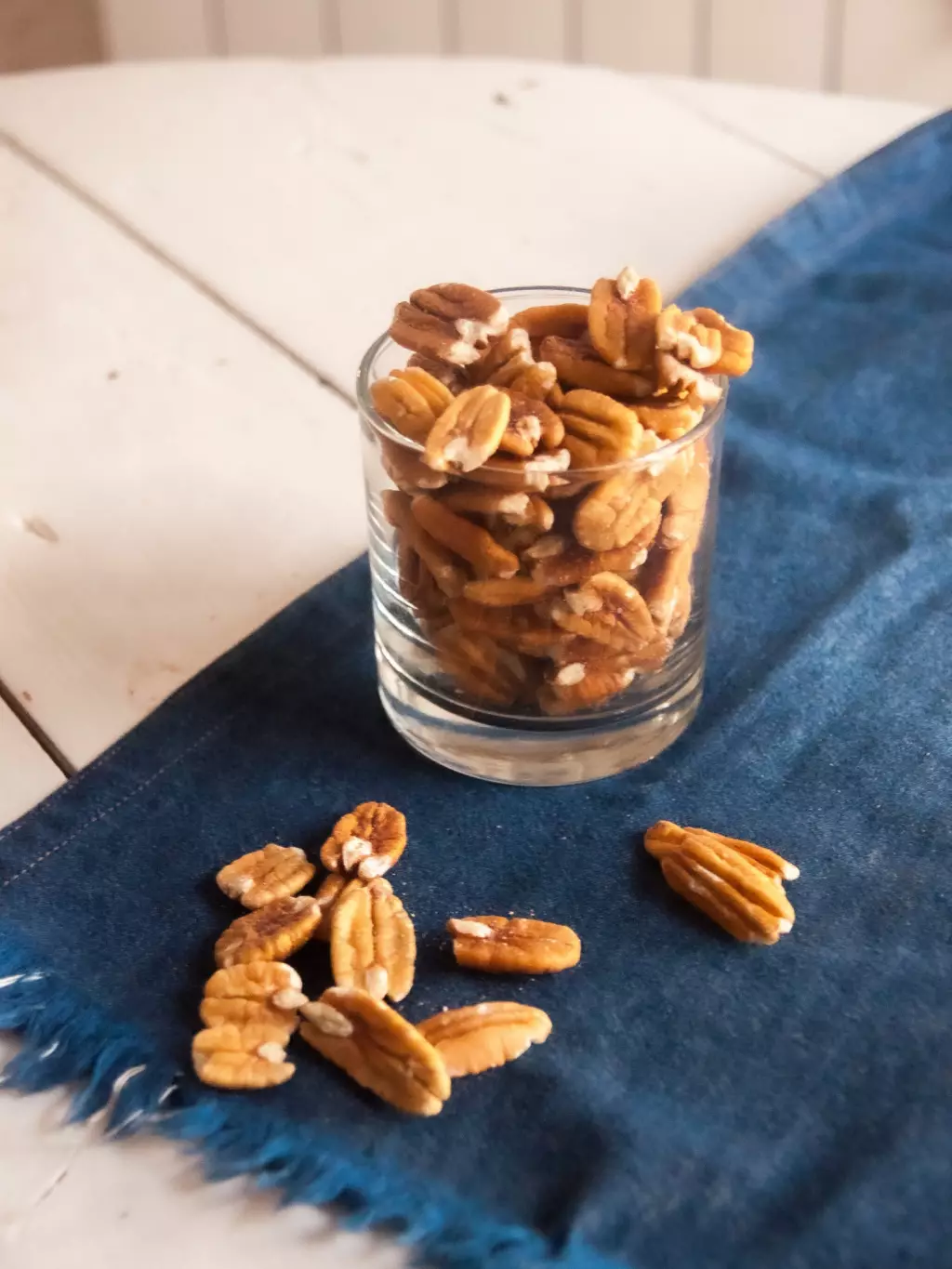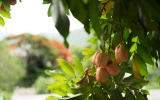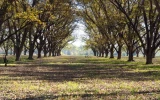Average Pecan Orchard Profit per Acre (2023 Breakdown)
To estimate your pecan orchard profit per acre for 2023, consider several factors such as tree age, production costs, yield, and market prices. A pecan orchard can be highly lucrative if you have suitable land, climate, and management practices. In this article, we'll explore the average pecan orchard profit per acre and what you can do to maximize your returns.
Some farmers have reported making $3,800 per acre, but this amount includes other income-generating aspects like retail centers. If you project a 500-pound pecan yield per acre at an average price per pound of $1.77, you'll get a $405 average net profit per acre from your pecan orchard.
To calculate exact figures for 2023, you can draw on past trends and current data to make projections. Let's dive in and discover the potential profits of growing one of the most popular nut crops in the world.
Summary
- Production costs of a pecan orchard include fertilizer, herbicides, mowing, and insecticide applications, as well as irrigation needs.
- When evaluating the profitability of your pecan orchard, consider plant spacing, pecan variety, orchard management practices, and harvesting and processing costs so you can maximize your earnings potential.
- To enhance the profitability of your pecan orchard, you can manage irrigation, control pests and diseases, and prune and train your trees.

On this page:
Pecan Orchard Profit per Acre
While profits may vary depending on factors such as location and production methods, we will provide a general overview of what you can expect in terms of profit per acre.
Pounds per acre of pecan
In the first five years of a pecan grove, trees can yield around 40 to 50 pounds per acre. Record-breaking yields have reached up to 1,000 pounds per acre during that timeframe. As your trees mature, you can expect increased production in later years.
Yield is a critical factor in determining profit per acre of pecan. Generally, as your trees mature, their yield should increase. For instance, a pecan grove may produce 40 to 50 pounds per acre at five years of age, and the record for a 5-year production average is 1,000 pounds per acre. However, your specific yield will depend on factors such as tree variety, spacing, and management practices.
Production costs such as fertilizer, herbicides, mowing, and insecticide applications, as well as irrigation needs, also play a crucial role in determining profit. Optimal water usage is essential for a healthy pecan orchard, and according to the UGA Pecan Management Calendar, bearing trees will require 576–840 gallons of water per acre per day in the spring, increasing to 3600–4200 gallons per acre per day in the late summer and early fall.
Pecan market prices
Now, let's look at the average annual price per pound of pecans. In 2019, the average price was $1.77 per pound. Note that market prices may fluctuate over time, and the prices in 2023 could potentially be different.
Current market prices and trends will influence your profit margins. In 2020, the value of the pecan crop totaled $399 million, with an average annual price of $1.32 per pound. According to the USDA, the average yield for improved variety pecans in 2020 was 752 pounds per acre. Keep an eye on market forecasts and be prepared to adapt your revenue expectations as needed.
Calculate your expected profit per acre
-
Multiply your projected yield per acre (e.g., 500 pounds) by the average annual price per pound (e.g., $1.77).
-
Subtract any costs associated with production, such as irrigation, labor, and maintenance.
For example, if you estimate that your pecan grove will produce 500 pounds per acre at an average price of $1.77 per pound, your gross revenue per acre would be $885.
Then subtract the production costs, so you'll arrive at your net profit per acre. Assuming the total production cost of a 50-acre pecan orchard is $24,000, you get a production cost of $480 per acre.
To calculate:
Expected profit per acre = Gross revenue per acre - production cost per acre
Expected profit per acre = $885 - $480 = $405
Costs of Pecan Investment and Production
| Investment Cost of a Pecan Orchard | Small-scale (less than 50 acres) | Medium-scale (50–200 acres) | Large-scale (more than 200 acres) |
|---|---|---|---|
| Land | $50,000 - $100,000 | $200,000 - $500,000 | $1,000,000 - $5,000,000 |
| Soil testing and site preparation | $5,000 - $10,000 | $10,000 - $20,000 | $50,000 - $100,000 |
| Tractor | $10,000 to $30,000 | $30,000 to $50,000 | $100,000 to $200,000 |
| Pruning shears | $50 to $100 | $100 to $500 | $500 - $1,000 |
| Nut harvesters | $500 to $1,000 | $5,000 to $10,000 | $100,000 - $500,000 |
| Sprayer | $1,000 to $2,000 | $2,000 to $5,000 | $5,000 - $10,000 |
| Irrigation | $2,000 to $5,000 | $20,000 - $50,000 | $100,000 - $500,000 |
| Trees | $10,000 - $20,000 | $50,000 - $100,000 | $500,000 - $1,000,000 |
| Total start-up costs | $78,550 - $169,100 | $317,100 - $715,500 | $1,855,500 - $7,311,000 |
It's important to note that these are rough estimates, and the actual costs can vary depending on the specific needs of the orchard and the type of equipment purchased. Below are the equipment needed for a pecan orchard:
Small pecan orchard equipment
- Tractor with a small trailer for transporting equipment and materials around the orchard
- Pruning shears for shaping and maintaining the trees
- Nut harvesters for collecting the pecans
- Sprayer for applying pesticides and fertilizers
- Irrigation system for watering the trees
Medium pecan orchard equipment
- Tractor with a larger trailer for transporting equipment and materials around the orchard
- Pecan shaker for removing the nuts from the trees
- Air blast sprayer for more efficient application of pesticides and fertilizers
- Mower for cutting grass and weeds around the trees
- Drying equipment for processing the nuts
Large pecan orchard equipment
- Multiple tractors and trailers for efficient transportation of equipment and materials around the orchard
- Mechanical nut harvesters for faster collection of the pecans
- Large-scale irrigation system for watering the trees
- Fertilizer spreader for efficient application of fertilizers
- Storage facilities for storing and processing the nuts
| Ongoing Costs of a Pecan Orchard (per year) | Small-scale (less than 50 acres) | Medium-scale (50–200 acres) | Large-scale (more than 200 acres) |
|---|---|---|---|
| Labor | $10,000 - $20,000 | $50,000 - $100,000 | $500,000 - $1,000,000 |
| Maintenance | $5,000 - $10,000 | $20,000 - $50,000 | $100,000 - $500,000 |
| Fertilizer, herbicides, and insecticide | $5,000 - $10,000 | $20,000 - $50,000 | $100,000 - $500,000 |
| Packaging and distribution | $2,000 - $5,000 | $10,000 - $20,000 | $50,000 - $100,000 |
| Insurance and taxes | $2,000 - $5,000 | $5,000 - $10,000 | $10,000 - $20,000 |
| Total operational costs | $24,000 - $50,000 | $105,000 - $230,000 | $760,000 - $2,120,000 |
Factors Affecting the Profitability of Your Pecan Orchard
Plant spacing of pecan trees
Determining the appropriate plant spacing is crucial for maximizing pecan production per acre. Here are some general guidelines to consider:
- For standard-sized trees: Aim for 35–50 feet apart.
- For dwarf or semi-dwarf trees: Spacing should be 30–35 feet apart.
Keep in mind that proper plant spacing will allow for adequate sunlight, airflow, and room for equipment operations.
Choice of pecan variety
Select varieties that are adapted to your region's climate and have desirable attributes, such as:
- High yielding potential
- Consistent production
- Scab resistance
- High kernel quality
For example, the Lakota pecan variety is known to have these attributes, making it a potentially profitable option.
Orchard management practices on your pecan grove
Proper management can dramatically improve pecan production, leading to higher profits. Key management practices include:
- Irrigation: For bearing trees, start with 576–840 gallons of water per acre per day in the spring and increase to 3,600–4,200 gallons per acre per day in late summer and early fall.
- Pest control: Implement a comprehensive pest management plan to reduce crop losses.
- Pruning: Prune trees regularly to maintain a healthy and balanced canopy.
Harvesting and processing costs for your pecans
Finally, it's essential to evaluate the costs of harvesting and processing your pecans. Some guidelines for doing so include:
- Mechanization: Invest in equipment and technology to reduce labor costs and increase efficiency.
- Post-harvest handling: Optimize drying, storage, and transportation to maintain pecan quality and reduce losses.
How to Improve Pecan Orchard Profitability

Proper irrigation management on your orchard
Bearing trees require different amounts of water throughout the growing season. In the spring, you should start with 576–840 gallons of water per acre per day, increasing it to 3600–4200 gallons per acre per day in late summer and early fall, just before harvest time.
Using an efficient irrigation system, monitoring soil moisture, and scheduling water applications can help you optimize water use and reduce costs. Regularly check and maintain your irrigation system to avoid any leaks and ensure water is applied evenly and efficiently.
Pest and disease control on your pecan grove
This is crucial to maintaining the health and productivity of your pecan trees, as well as increasing the overall profitability of your orchard. Scab is one of the major diseases affecting pecan trees, and over 12% of the variable cost of production in the Southeast comes from fungicide applications to control it.
To minimize the impact of pests and diseases, implement an integrated management plan:
- Monitor your orchard regularly for signs of pests or diseases
- Use resistant cultivars if available, reducing the need for chemical controls
- Apply fungicides and other chemical control measures only when necessary, following label recommendations
- Employ beneficial insects and biological control agents when appropriate
Pruning and training trees for good structure
By pruning and properly training your trees, you promote good tree structure and minimize the risk of tree damage due to wind and heavy crop loads.
Here are some steps to follow when pruning and training your pecan trees:
- During the first few years, focus on establishing a central leader and evenly spaced scaffold branches
- Remove any broken, diseased, or damaged branches
- Thin out crowded or closely spaced branches to improve light penetration and air circulation
- As the trees mature, prune to maintain tree structure and balance the canopy
Market Trends in the Pecan Industry

Growing consumer demand for pecans
This increased demand can be attributed to the numerous health benefits of pecans, along with their versatility in various recipes. Pecans are high in healthy fats, vitamins, and minerals, making them a popular choice in health-conscious diets.
One major factor driving consumer demand is the growth of the improved variety of pecan production. In 2020, production of improved variety pecans increased by 25% from the previous year, according to the National Agricultural Statistics Service. These improved varieties are not only larger but also have better yield potential, making them more attractive to consumers.
Export market for your pecans
When it comes to the export market, your pecan business can benefit from the high demand for pecans in international markets. Pecan exports to countries like China and Mexico have been on the rise, opening up new opportunities for growers like yourself.
To ensure the profitability of your pecan orchard, it's essential to stay informed of market trends and adapt to ever-evolving consumer preferences and export opportunities.
Remember to prioritize efficiency in your pecan orchard management as well. In 2020, the average pecan yield was 752 pounds per acre, up 105 pounds from the previous year (National Agricultural Statistics Service). Monitoring your orchard's productivity and taking steps to optimize yield will help ensure the ongoing success of your pecan operation.



